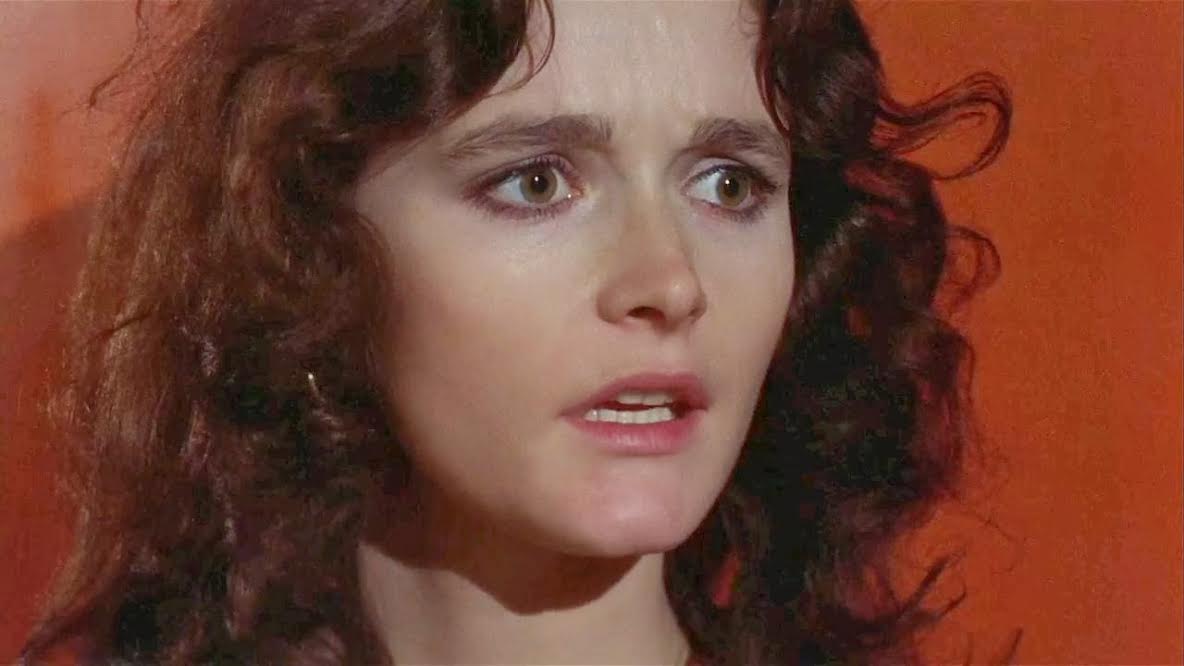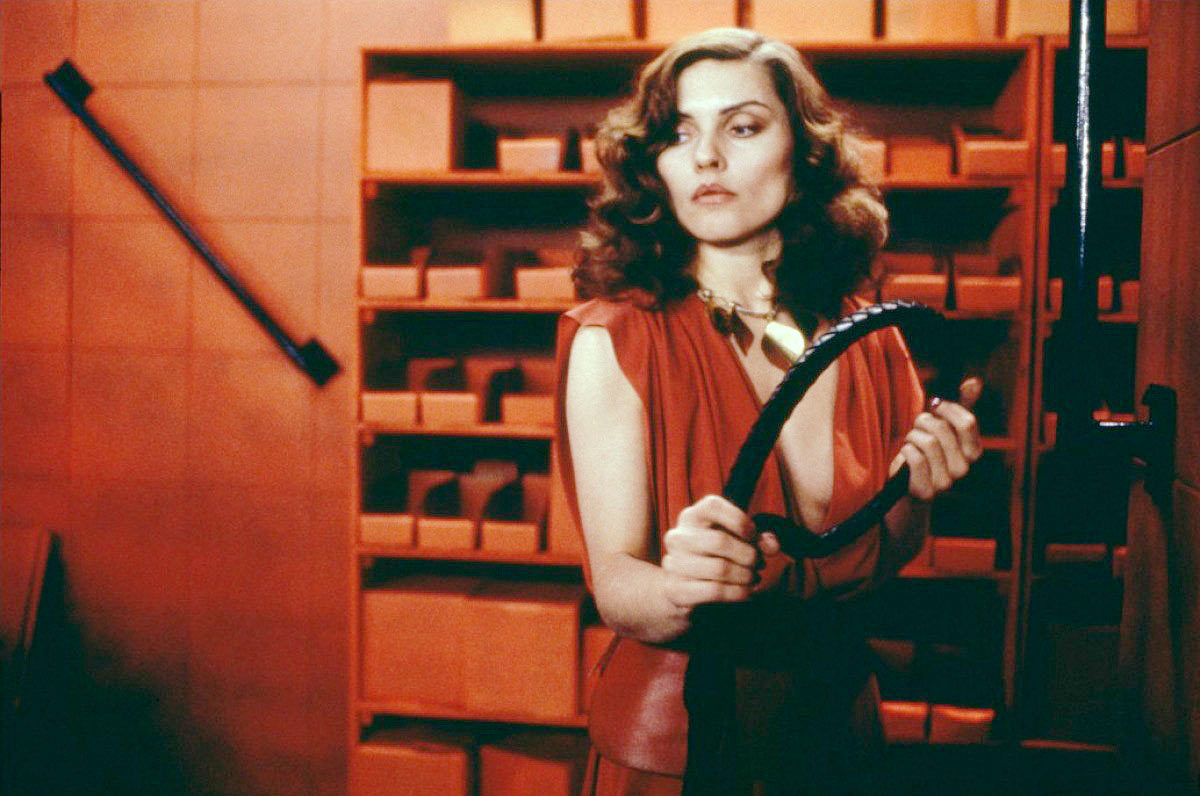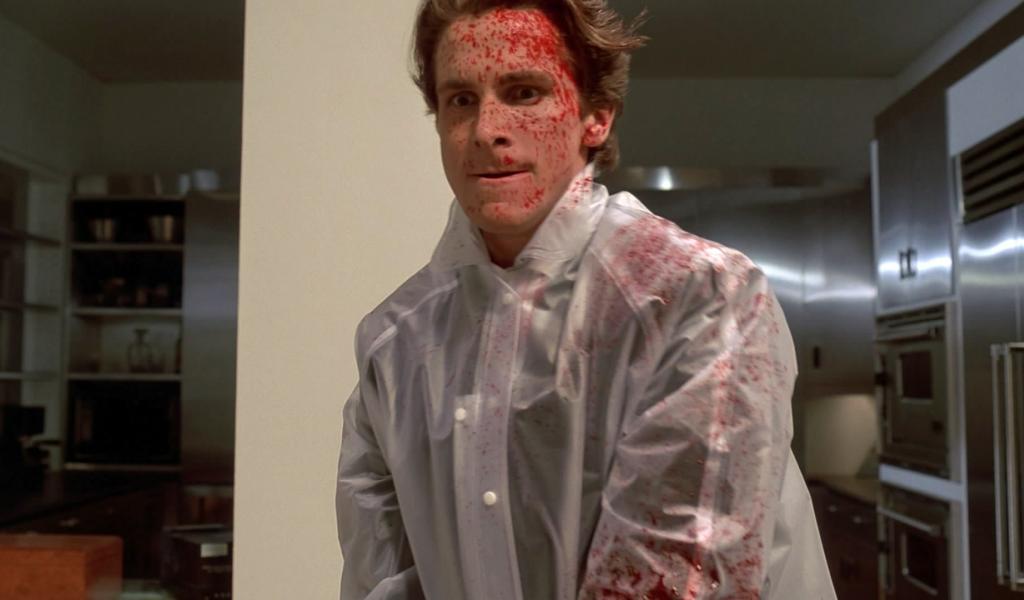This guest post written by Stefan Sereda appears as part of our theme week on Sisterhood. | Spoilers ahead.
Classical Hollywood horror cinema often positioned its monsters as threats to a conservative social order represented on film through family and the home. King Kong snatches Ann Darrow away from Jack Driscoll’s apartment and Dracula lures women from their intended husbands. In Cat People (directed by Jacques Tourner, 1942), a woman fails to consummate her marriage because sexual arousal turns her into a ferocious feline, and an adopted child brings a killer’s instincts to roost in The Bad Seed (directed by Mervyn LeRoy, 1956).
In the 1960s and 1970s, Women’s Liberation and the Sexual Revolution provoked a swell of reactionary horror films that reframe domestication as a potential trap that can destroy women and cause social fragmentation. Nightmarish expressions of Second Wave feminist sentiments abound. In Rosemary’s Baby (directed by Roman Polanski, 1968), a newlywed (Mia Farrow) suffers spousal rape in a plot to breed the Antichrist. The Stepford Wives (directed by Bryan Forbes, 1975) depicts husbands replacing their wives with obedient fembots. The Texas Chainsaw Massacre (directed by Tobe Hooper, 1974) locates its horror in a disturbing symbolic inversion of the American family homestead.
Brian De Palma’s 1973 film Sisters is a post-Psycho (directed by Alfred Hitchcock, 1960), pre-Halloween (directed by John Carpenter, 1978) proto-slasher that belongs to this loose cycle of liberationist horror cinema. For an early-1970s film directed and co-written by a man, according to journalist and film critic Julie Salamon some critics deemed a “perverse misogynist,” Sisters displays an early concern with women’s liberation in mainstream American film (De Palma’s collaborator on the screenplay was Louisa Rose). Many of the film’s social complaints remain liberal talking points today: that police can be motivated by racism, that the legal institution can subject women to excessive scrutiny, and that the medical-psychiatric institution remains patriarchal and sexist in its diagnosing and treatment of women. Yet the film’s intersections with disability are more complicated.
De Palma’s films have inspired protests from anti-porn feminists, but critics also champion his depictions of women and illustrate that his films are “about misogyny.” For example, Carrie (1976), a film feminist scholars both attack and defend, is a film about women’s internalized misogyny from its opening scene onward: it nonetheless passes the Bechdel Test, privileges a woman’s perspective in almost every scene, and represents a broad range of women characters, including career women.
A rote observation about De Palma is that he takes up the mantle of Hitchcockian themes and motifs: guilt, suspicion, repression, voyeurism, psychoanalytic critique, and sexualized violence. Sisters maintains this trend in De Palma’s Hitchcockian oeuvre. De Palma hired Hitchcock collaborator Bernard Herrmann to compose the nerve-wracking score. Moreover, Sisters rewrites Alfred Hitchcock’s Rear Window (1954) and the pseudo-gothic thriller, Psycho, from a post-counterculture historical context.
Sisters grounds its thematic appraisal of domesticity within literal and metaphorical depictions of sisterhood, wherein the sisters are foils for one another. Margot Kidder plays twin Quebecois sisters Danielle and Dominique. As the plot unravels, Danielle and Dominique are conceived as Canada’s first conjoined twins, who are now separated. The film introduces the viewer to Danielle, the seemingly “sweet” sister with whom De Palma aligns our sympathies: Danielle is pleasant, flirtatious, and cast as the survivor of past trauma and an aggressive ex-husband. As an immigrant from French Canada, she is also positioned as an ambiguous “other” in a narrative that film critic and producer Steven Jay Schneider describes in The Horror Film as a “powerful depiction of monstrous female sexuality.” In this respect, the film is a sister-narrative to Psycho. The only way to conduct a proper post-mortem on Sisters — a deliberately nonsensical film — is to spoil its plot twists, so this would be a good time to pause and watch the film online.

The film frames women’s expected domestication, reified through decades of Hollywood cinema, as a concern from the opening sequence onward. Model/actress Danielle meets Phillip (Lisle Wilson), an African-American man, on the set of an exploitative Candid Camera-style television game show, Peeping Toms. The exploitative show’s stereotyping attitudes are cemented when the host gives Danielle a set of cutlery for her participation, and Phillip, dinner for two at New York’s African Room. Phillip grimaces, but agrees to bring Danielle along at her behest.
Over dinner, Danielle insists she is not a Women’s Liberationist. Soon after, her stalker ex-husband, Emil (William Finley), pleads with her to leave with him. Emil is dragged away, and Danielle, now inebriated, convinces Phillip to escort her to her Staten Island apartment, where she seduces him (it is worth noting here that interracial sexual relationships, though becoming more frequent in independent films such as Sisters, were still seldom depicted in Hollywood films in 1973). As Phillip caresses his way up Danielle’s leg, Herrmann’s soundtrack escalates to a grating cacophony and the camera zooms in to reveal a large scar on Danielle’s hip. The soundtrack suggests this scar is a source of anxiety and monstrosity. What follows is a narrative about trauma and ability, or disability, both physical and psychological. At its root is Danielle’s desire for normalcy, which she interprets as heteronormativity and motherhood.
After Danielle and Phillip sleep together, she awakens from a dream that produces moans both tormented and orgasmic. She proceeds to the bathroom, where she grips her womb in pain and places two red tablets on the sink’s basin. The pills provide a stark contrast to the apartment’s virginal, all-white color scheme (Danielle typically wears white, as well). Since these pills keep Danielle functioning and therefore —as it is later revealed — liberated, they are somewhat analogous to the contemporaneous emergence of birth control technology and its role in the Sexual Revolution. Before Danielle can take the pills, she hears a woman’s voice calling her name and enters the corridor, where she argues with her sister, Dominique, off-screen. The argument, wherein Dominique labels Danielle “disgusting” for bringing a man home, wakes up Phillip, who proceeds to the bathroom and inadvertently knocks Danielle’s pills down the sink without realizing this blunder. Danielle assures Phillip her sister only stopped by because it is their birthday, and sends him out to renew her prescription. While Phillip stops to buy Dominique and Danielle a birthday cake, Danielle realizes she is out of medication, and, panicking, calls Emil for help.

When Phillip returns, he grabs a knife from Danielle’s new cutlery set and brings her the cake while she is asleep under some blankets. Phillip’s last words are benevolently patronizing, uttered after Danielle grasps the knife: “Now you know you’re not supposed to cut the cake until you blow out the candles.” Danielle, in a moment of rage, pounces on Phillip and stabs him to death.
In this first split screen sequence, Danielle’s neighbor, Grace (Jennifer Salt), a liberal investigative journalist, witnesses the murder through her window and phones the police. The detectives predictably bungle the investigation, preferring to waste critical time railing against Grace for writing an op-ed where she called police racist “pigs.” The senior detective immediately assumes Grace is imagining things, while his partner reveals his racism when he tells her, “Take it easy, lady, these people are always stabbing each other.” The police are only motivated to investigate because they fear Grace will give them more bad press. Meanwhile, the viewer watches in split screen as Danielle wakes up and Emil arrives. Emil promptly discovers the murder, but Danielle has no memory of the event. Instead, she whispers, “Dominique, what have you done?” Emil appears shocked by Dominique’s presence, but he exerts a patriarchal control over the situation, shaking Danielle out of her catatonia and telling her, significantly, “Put on some makeup. It must look as though nothing has happened.” In a scene reminiscent of Norman cleaning up after “Mother” commits murder in Psycho, Emil helps Danielle clean the apartment and stash the corpse in a fold-out sofa (if that sounds implausible, De Palma films this action in one shot to demonstrate it is possible to hide a body this way). He avoids running into the police with a garbage bag full of blood-soaked rags by seconds.
Casual and institutional sexism repeatedly thwart Grace’s attempts at investigation. When Grace and the detectives confront Danielle, the police sympathize with Danielle, and the viewer can appreciate why they would: Danielle is charming, demure, beautiful but modest — a traditionally feminine woman who represents herself as a victim, the lonely divorcee. Grace, on the other hand, is anything but her namesake: shrill-voiced, abrasive, accusatory, and clumsy enough to drop the cake she discovers, destroying a key piece of evidence. The police threaten to charge Grace unless she drops the matter.
Grace stubbornly refuses to abandon the investigation, and viewers can assume this is partly an act of rebellion against her mother, who belittles her journalism career and berates her about finding a husband. Eventually, Grace confirms her suspicion that Danielle had a sister, about whom she is lying. While watching a documentary, Grace hears a psychiatrist in patriarchal clergy robes describe Dominique as “disturbed” and Danielle “sweet” and “so responsive,” but says the latter can only be that way because of her sister. After, Dominique is said to have died during an emergency surgery that separated the conjoined twins.
De Palma once responded to accusations of misogyny with a quip: “I’m always attacked for having an erotic, sexist approach — chopping up women, putting them in peril. I’m making suspense movies! What else is going to happen to them?” (Caputi 92). While this blasé attitude might not have won him more feminist fans, Sisters’ tragic denouement has a Brechtian pedagogy meant to gall and galvanize liberal viewers.
When Grace raids the psychiatric hospital where Emil conceals Danielle, the investigation falls apart. After an encounter with a patient who shrieks because Grace asks to use the telephone (the incident presents another metaphor for women obsessively seeking false security in a domestic space), Emil easily convinces his staff that Grace is another deluded patient who needs sedating. Grace is dosed (as in Rosemary’s Baby, wherein Rosemary is restrained on a bed before being penetrated and drugged with a needle, the incident plays out like rape), and Emil begins to use hypnosis to convince her there was no murder.
The sequence that follows is metacinematic, unreliably narrated, and only logical in a surrealist sense: Grace imagines herself as Dominique, attached to Danielle, in the documentary she had viewed on the sisters. Therein, it is revealed that Danielle was traumatized as a child when others called her “freak.” Later, in the context of an inappropriate relationship with her doctor, Emil, she developed a strong desire to have a baby. Unfortunately, Dominique was always there to observe Danielle’s sexual relationship with Emil. In a surgery scene that plays out like a black mass attended by a host of spectators, Emil separates the sisters using a cleaver from the cutlery set Danielle was given at the beginning of the film. The film’s metaphor imagines Danielle and Grace as sisters, with women’s domestication and innate urges for procreation being to blame for career women’s suffering. For Danielle to have the “normal” life she desires, it is necessary to excise less “feminine” qualities and pursuits, as represented through Grace and Dominique.
After this sequence, Danielle is provoked by traumatic memories. Emil assures her he loves her and kisses her, which of course triggers her to murder him. Since the police now know Danielle is a murderess, they are ready to believe Grace. Unfortunately, Grace has been brainwashed by a patriarchal representative of the psychiatric establishment and she refuses to cooperate. She tells the police “there was no murder” from what looks like a teenager’s bedroom at her mother’s house, having regressed to a childish state where she now depends on domestication.
As with Rosemary’s Baby, Danielle’s desire for motherhood becomes a site of horror. Similar to Irena (Simone Simon) in Cat People and Carol (Catherine Deneuve) in Repulsion (directed by Roman Polanski, 1965), Danielle’s murderous tendencies erupt when she is sexually aroused or confronted. And like Norman Bates, she dissociates herself from the act of murder by adopting the persona of a dead female family member that once kept her bound in place. Sisters is, perhaps, ableist in how it associates congenital disability with horror. Yet Danielle’s monstrosity is located more in the discrepancy between her desire to fulfill a “normal” feminine role by denying her disability and the mental illness this provokes after her sister’s death. In De Palma’s film, the sister is the revenant reminding Danielle of the expense paid for her traditionally feminine identity, her liberated actions, and her domestic desires. Since Danielle’s desire for a child preempts Dominique’s accidental death (or murder), the opening credit sequence is more harrowing in retrospect: twin sisters, developing in utero.
See also at Bitch Flicks: The Scary Truth About Sisters in Horror Films; When Sisterhood Sours in Horror Films
References: Caputi, Jane (June 15, 1987). The Age of Sex Crime. Popular Press. p. 92.
Dr. Stefan Sereda is a writer/researcher with a PhD in English and Film Studies and an MA in Literature with a focus on gender and genre. His publications on American cinema and global media have appeared in A Companion to Martin Scorsese, The Memory Effect, Viewing African Cinema in the Twenty-First Century, the Directory of World Cinema: Africa, and ARIEL: A Review of International English Literature.












